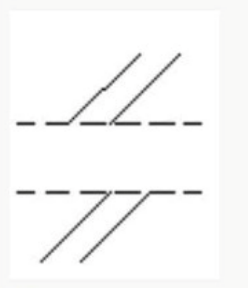API API-577 - Welding Inspection and Metallurgy Exam
When welding using the GTAW process, which of the following best describes the appearance of a transverse crack on a radiograph?
Which of the following is a hazard associated with in-service welding on a carbon steel pipe containing chlorine?
In magnetic particle examination, the yoke is placed parallel to the weld to detect cracks:
The weld symbol represents which type of weld groove?

The direction of magnetic flux can be confirmed by the use of a:
One of the main differences between welding nickel alloys and austenitic stainless steels is that with nickel alloys:
What increases when a welder increases the amperage?
A limitation of a stud arc welding (SW) process is:
Items to be included in the WPS for GMAW process are:
When radiographic examination is used for welder qualification utilizing the GMAW-S process, the minimum length of the test coupon to be examined is:



